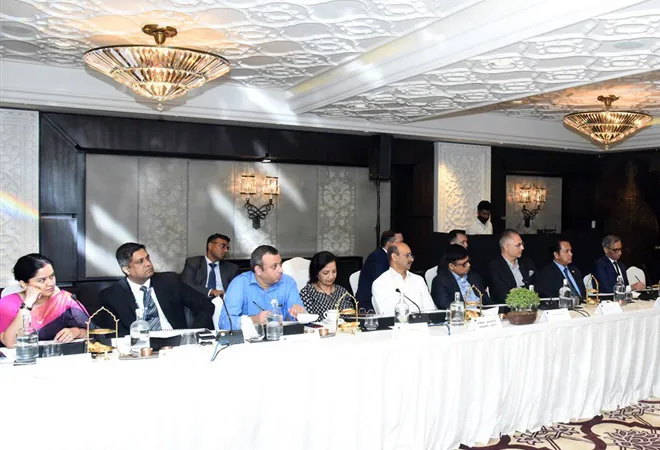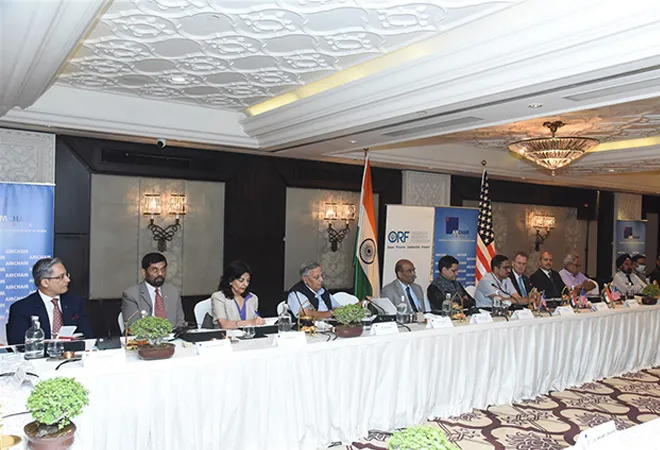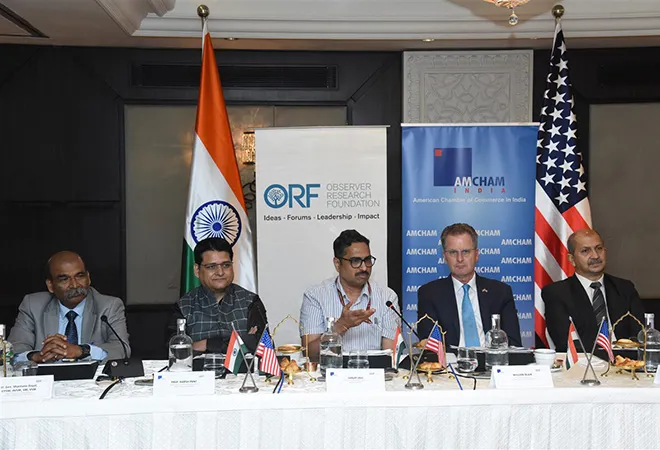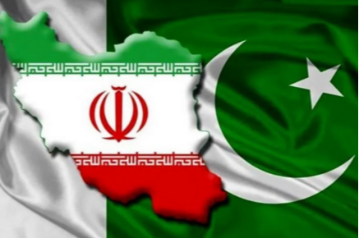On 29 August 2022, the Observer Research Foundation and the American Chamber of Commerce in India co-hosted a closed-door roundtable on the India-US defence partnership in New Delhi. The roundtable brought together key stakeholders from the Indian government, members of the Indian and US defence industry, and strategic experts. The discussions focused on boosting defence exports from India with a focus on Co-development and Co-production. Based on that discussion, the following aspects came to light.
Indian defence-industrial capabilities
- The Defence Industrial Consultative Forum has deepened the industrial cooperation between the US and India by identifying opportunities to jointly research, develop, and produce warfighting capabilities. With these exchanges, Indian and US defence establishments now recognise mutual priorities.
- India has purchased complex systems from the United States. This equipment has added a significant capability, particularly for the Indian Air Force. It has also immensely benefitted in skills and knowledge-sharing by participating in joint exercises with the US Air Force.
- Beyond defence trade, India perceives a significant role for the American defence industry to boost Indian defence-industrial capabilities and achieve the goal of Atmanirbharta or self-reliance. Indeed, joint ventures between the American defence companies and their Indian defence partners, which initially began as an offset obligation, have strengthened the domestic defence-industrial base. This has also boosted India’s defence exports, and at 34 percent, the US constitutes the largest destination for these exports.

Indian defence acquisition
- The Indian defence planners are currently contemplating T1–a technical criterion for defence procurement, in addition to L1. While it is easier to evaluate bids on L1, a similar evaluation is not possible for the T1 since different systems on offer have varying technical specifications. However, T1 will not replace L1.
- During acquisition, the Indian military presumes that the Original Equipment Manufacturers (OEMs) will be able to hold on to the estimated bidding cost for some years as the acquisition process s years together. However, American OEMs noted that they find it difficult to hold on to the price due to multiple factors like escalating cost of raw materials and inputs and the fluctuating value of the Indian Rupee.
- The US defence companies still do not find the Indian market investor friendly. Some US industry partners noted that uncertainties over the acquisition process make it difficult for them and their Indian partners to invest in research and development and manufacturing infrastructure.
- Indian defence planners note the business competition between the various defence companies. Sometimes this competition manifests into infighting and consequent casting of aspersions on the defence procurement process. This has caused anxiety in the Ministry of Defence bureaucracy, which is experimenting with different models to expand the role of the private sector in defence production.

Suggestions for advancing cooperation
- Indian defence planners note that with the US equipment, there is a certain degree of reliability vis-à-vis the quality of the components in the equipment. However, it is not the case with domestic equipment. Therefore, a potential area of bilateral cooperation would be quality control and quality assurance for the Indian defence companies.
- Industry partners have noted the stringent requirement of the Indigenous Component (IC) in the Indigenously Designed, Developed and Manufactured (IDDM) and Make 2 categories. For instance, there is a requirement of 50 percent IC in the prototype stage of Make 2. The US companies are willing to contribute to the prototype development but cannot do so because of the IC requirements. Potentially, this requirement can be moved from the prototype to the production phase of the equipment. This will allow the US companies to collaborate with their Indian partners.
- Defence Technology and Trade Initiative’s focus should be expanded from equipment and technologies to include cooperation on Titanium and rare earth metals, which are critical elements of modern defence equipment.
Compiled by Harsh V. Pant and Sameer Patil
The views expressed above belong to the author(s). ORF research and analyses now available on Telegram! Click here to access our curated content — blogs, longforms and interviews.






 PREV
PREV

